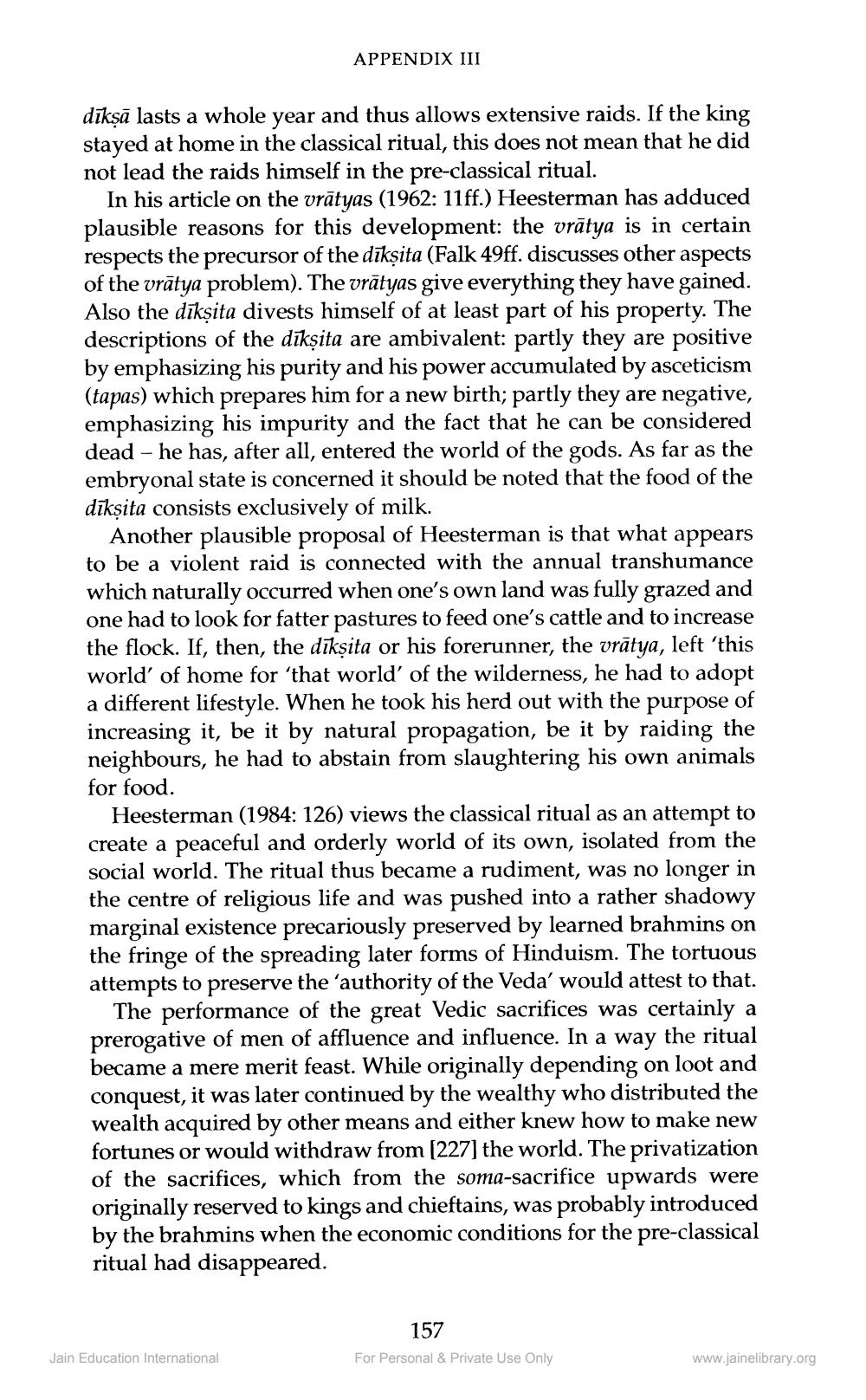________________
APPENDIX III
dīkşā lasts a whole year and thus allows extensive raids. If the king stayed at home in the classical ritual, this does not mean that he did not lead the raids himself in the pre-classical ritual.
In his article on the vrātyas (1962: 11ff.) Heesterman has adduced plausible reasons for this development: the vrātya is in certain respects the precursor of the dīkşita (Falk 49ff. discusses other aspects of the vrātya problem). The vrātyas give everything they have gained. Also the dīkşita divests himself of at least part of his property. The descriptions of the dīksita are ambivalent: partly they are positive by emphasizing his purity and his power accumulated by asceticism (tapas) which prepares him for a new birth; partly they are negative, emphasizing his impurity and the fact that he can be considered dead - he has, after all, entered the world of the gods. As far as the embryonal state is concerned it should be noted that the food of the dīkṣita consists exclusively of milk.
Another plausible proposal of Heesterman is that what appears to be a violent raid is connected with the annual transhumance which naturally occurred when one's own land was fully grazed and one had to look for fatter pastures to feed one's cattle and to increase the flock. If, then, the dīkṣita or his forerunner, the vrātya, left 'this world' of home for 'that world of the wilderness, he had to adopt a different lifestyle. When he took his herd out with the purpose of increasing it, be it by natural propagation, be it by raiding the neighbours, he had to abstain from slaughtering his own animals for food.
Heesterman (1984: 126) views the classical ritual as an attempt to create a peaceful and orderly world of its own, isolated from the social world. The ritual thus became a rudiment, was no longer in the centre of religious life and was pushed into a rather shadowy marginal existence precariously preserved by learned brahmins on the fringe of the spreading later forms of Hinduism. The tortuous attempts to preserve the ‘authority of the Veda' would attest to that.
The performance of the great Vedic sacrifices was certainly a prerogative of men of affluence and influence. In a way the ritual became a mere merit feast. While originally depending on loot and conquest, it was later continued by the wealthy who distributed the wealth acquired by other means and either knew how to make new fortunes or would withdraw from [227] the world. The privatization of the sacrifices, which from the soma-sacrifice upwards were originally reserved to kings and chieftains, was probably introduced by the brahmins when the economic conditions for the pre-classical ritual had disappeared.
157 For Personal & Private Use Only
Jain Education International
www.jainelibrary.org




